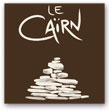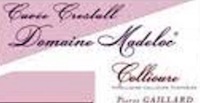Languedoc-Roussillon
|
||||||||||||
|
Languedoc |
Roussillon |
||
 |
 |
 |
 |
|
Domaine COTTEBRUNE Faugeres |
Mas de DAUMAS GASSAC
Grand Vins |
Moulin de GASSAC Varietal wines |
Domaine MADELOC Banyuls & Collioure |
The huge volumes of wine produced in the Languedoc (Roussillon should really be regarded as a separate region although it would be so small that it would inevitably be overlooked by all but the keenest wine lovers) are mixed in terms of quality although there is no doubt that things have improved immeasurably in the last 20 years. It is the world's largest vineyard: around 285,000 ha (700,000 acres) under vine. However, yields have often been far too high (occasionally in excess of 200hl/ha) mostly from cooperatives who, at one point, were responsible for 10% of the world's wine production. Quality was never going to be at the forefront of this sort of winemaking. Something had to change.
It was probably the onslaught of inexpensive fruit bombs from Australia then Chile and South Africa that provided the catalyst for change. They competed with the Vin de Pays wines and pushed them aside with relative ease. The French had been resting on their laurels - indeed, it wasn't long before more exalted regions including Bordeaux had to shape up - and change had to come. Come it did.
The grape varieties are largely the same as in the Rhone Valley with Carignan often dominating although Bordeaux varietals such as Cabernet, Merlot and Sauvignon are found in plentiful supply as is Chardonnay, together with a host of local grapes. Carignan can make good wines but only when it is grown on old vines and yielded low. I have yet to find a decent Pinot Noir from this region; I suspect it is just too hot for this variety and the same applies to Viognier (although I will, no doubt, have to stand corrected one of these days).
There are plenty of sub-zones including Corbieres (varied quality, some very good), Fitou (great potential, largely unrealised), Minervois and La Liviniere (more refined), St-Chinian (characterful but still quite rustic) and Faugeres (smoother and more sophisticated). Their appellations generally sit high above the generic IGP Pays d'Oc (formerly Vin de Pays d'Oc) wines with exceptions for estates such as Mas de Daumas Gassac proving the rule.
To the south of the Languedoc, stretching down to the Mediterranean border with Spain, is the Roussillon. Less monocultural (other fruits are grown here in abundance), the geography is rather different. It certainly lacks the Cathar castles dotted around the Languedoc hilltops but it has the beautiful seaside town of Collioure to make up for this.
Wines from here are often very good and command moderately high prices. Reds can often contain quite a lot of Mourvedre and whites are often dominated by Roussanne. Both struggle a bit to establish a distinct identity and, as such, the prices asked for the better wines start to look very competitive when the wines are put into context with their peers from elsewhere in the world of fine wines.
However, Roussillon is best known for its sweet, fortified wines especially from Banyuls, Maury and (generally less good) Rivesaltes, known as Vins Doux Naturels (naturally sweet wines - the sweetness is achieved by stopping the fermentation whilst there is plenty of residual unfermented sugar). The reds tend to be made exclusively from Grenache Noir. Sometimes they are baked in glass demi-johns in direct sunshine, sometimes in the rafters. One estate I visited had barrels well over 100 years old which were so fragile they could not be moved to the new cellars that had been built outside the village. Imagine buying a house and finding a cellar full of 100-year-old fortified wines! The northern Rhone's Pierre Gaillard bought the Banyuls estate of Domaine Madeloc in 2002 and discovered a solera of Banyuls that had been started in 1920 and abandoned in the 1960s. It has been going again since Pierre took over and each year he draws off a few cases of exquisitely complex wine.
|
You must be aged 18 or over to purchase wine. |



